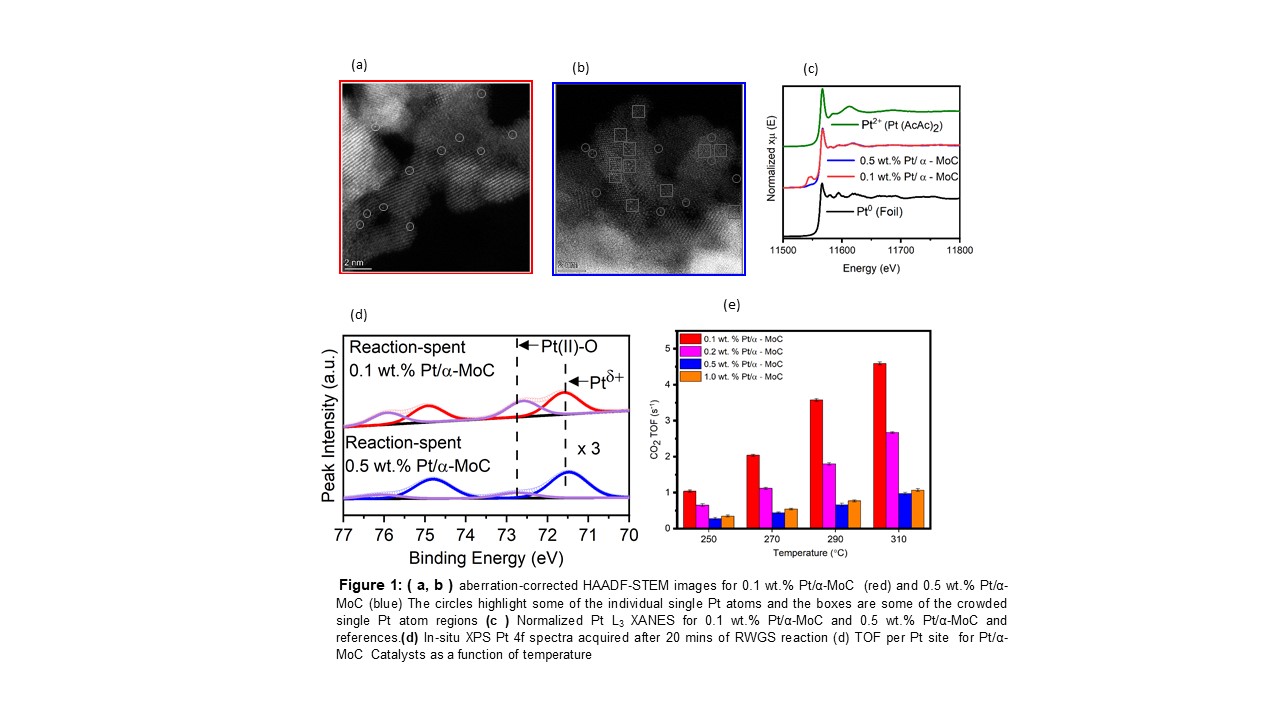2022 Annual Meeting
(177h) Higher Density of Supported Single-Atom Pt1 Metal in the Pt/?-Moc Catalysts Renders Lower Intrinsic Activity for the Reverse Water Shift Reaction
Authors
Molina, L., Clemson University
Rapp, C., Clemson University
Morales, L., Clemson University
Wang, H., Tianjin University of Tianjin University of Technology
Lee, S., Argonne National Laboratory
Karakalos, S., Harvard University
Yang, M., Clemson University
Due to the often-unique catalytic behaviors and cost-reduction potentials of single-atom catalysts (SACs), variety of prototype single-atom catalysts based on various supports have been developed in the last decade. Owing to their isolated nature, the turnover frequency per metal site (TOF) of SACs is constant, and hence, it is often assumed that increasing surface density of the supported metal (M1) will translate to at least linearly enhanced overall activity based on per weight of catalyst, and ultimately advance their practical applications. However, through our exploration of Pt/α-MoC SACs for the low-temperature (< 300ËC) reverse water gas shift reaction (LT-RWGS) to mitigate CO2 emissions, we report that this assumption does not hold true when catalytic roles of the supports or metal-support interfaces become significant. We prepared a series of single-atom Pt/α-MoC catalysts that differ only in surface Pt density as a function of Pt loading (0.1-0.5 wt.%) but of exact local environments as confirmed by in-situ CO-DRIFTS, aberration-corrected HAADF STEM, XPS and XAS characterizations. These catalysts are highly active and selective for the LT-RWGS and are stable under kinetic-control region for 16 hrs time-on-stream. Intriguingly, despite the similar and stable Pt1 site, the TOF declined with increase in Pt1 density. We found through pulse resection tests and operando-DRIFTS that the Pt/α-MoC comprises dual sites for RWGS, namely the Pt1 for H2 activation and the Pt-Mo interfaces for CO2 activation. Next, in-situ XPS, kinetics, and diffusion analyses revealed that with increasing Pt density, the difficulty in accessing the electron-rich Pt-Mo interfacial site by the CO2increased, with majority of the Pt-Mo interfaces acting as spectators in the high-density Pt1 samples.We believe that, when both supports and M1 play critical roles in catalysis, a singular pursuit of high surface density for the supported M1 may reversely hinder the overall catalytic efficiency.


